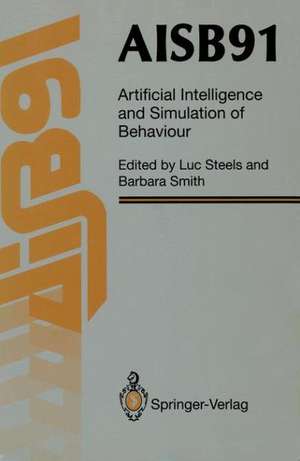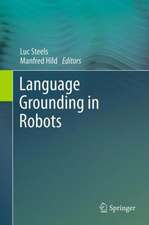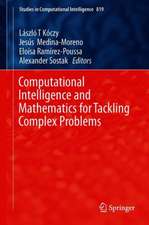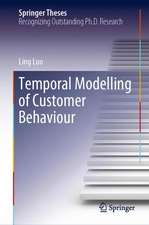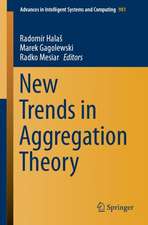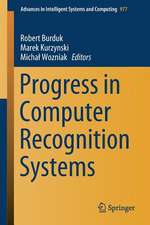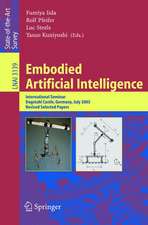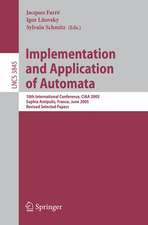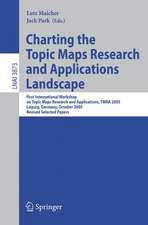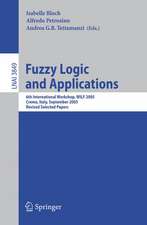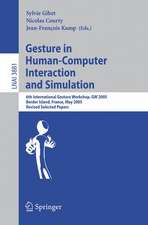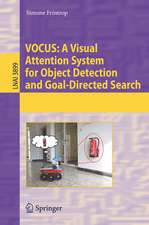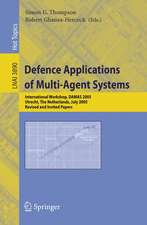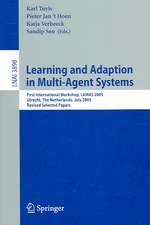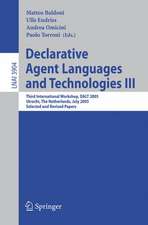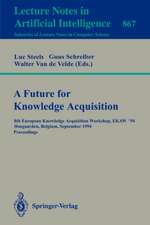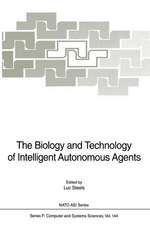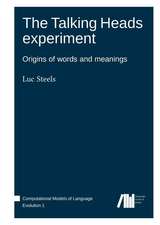AISB91: Proceedings of the Eighth Conference of the Society for the Study of Artificial Intelligence and Simulation of Behaviour, 16–19 April 1991, University of Leeds
Editat de Luc Steels, Barbara Smithen Limba Engleză Paperback – 28 apr 1991
Preț: 333.54 lei
Preț vechi: 416.93 lei
-20% Nou
Puncte Express: 500
Preț estimativ în valută:
63.84€ • 69.37$ • 53.66£
63.84€ • 69.37$ • 53.66£
Carte tipărită la comandă
Livrare economică 21 aprilie-05 mai
Preluare comenzi: 021 569.72.76
Specificații
ISBN-13: 9783540196716
ISBN-10: 3540196714
Pagini: 280
Ilustrații: XII, 265 p. 11 illus.
Dimensiuni: 170 x 242 x 15 mm
Greutate: 0.45 kg
Ediția:1st Edition.
Editura: SPRINGER LONDON
Colecția Springer
Locul publicării:London, United Kingdom
ISBN-10: 3540196714
Pagini: 280
Ilustrații: XII, 265 p. 11 illus.
Dimensiuni: 170 x 242 x 15 mm
Greutate: 0.45 kg
Ediția:1st Edition.
Editura: SPRINGER LONDON
Colecția Springer
Locul publicării:London, United Kingdom
Public țintă
ResearchDescriere
AISB91 is the eighth conference organized by the Society for the Study of Artificial Intelligence and Simulation of Behaviour. It is not only the oldest regular conference in Europe on AI - which spawned the ECAI conferences in 1982 - but it is also the conference that has a tradition for focusing on research as opposed to applications. The 1991 edition of the conference was no different in this respect. On the contrary, research, and particularly newly emerging research dir ections such as knowledge level expert systems research, neural networks and emergent functionality in autonomous agents, was strongly emphasised. The conference was organized around the following sessions: dis tributed intelligent agents, situatedness and emergence in autonomous agents, new modes of reasoning, the knowledge level perspective, and theorem proving and machine learning. Each of these sessions is discussed below in more detail. DISTRIBUTED INTELLIGENT AGENTS Research in distributed AI is concerned with the problem of how multiple agents and societies of agents can be organized to co-operate and collectively solve a problem. The first paper by Chakravarty (MIT) focuses on the problem of evolving agents in the context of Minsky's society of mind theory. It addesses the question of how new agents can be formed by transforming existing ones and illustrates the theory with an example from game playing. Smieja (GMD, Germany) focuses on the problem of organizing networks of agents which consist internally of neural networks.
Cuprins
Distributed Intelligent Agents.- Deriving Transformers from Knowledge Organized as a Society of Agents.- Multiple Network Systems (MINOS) Modules: Task Division and Module Discrimination.- Commitments and Projects.- RR - An Intelligent Resource-Bounded Reasoner.- Situatedness and Emergence in Autonomous Agents.- A Cognitive Model of Goal-oriented Automatisms and Breakdowns.- The ‘Logical Omniscience’ of Reactive Systems.- A Connectionist Semantics for Spatial Descriptions.- Neural Networks and Visual Behaviour: Flies, Panned Eyes, and Statistics.- Specifying Complex Behaviour for Computer Agents.- New Modes of Reasoning.- Integrating Neural Network and Expert Reasoning: An Example.- An Architecture for Selective Forgetting.- Constraint Propagation in Qualitative Modelling: Domain Variables Improve Diagnostic Efficiency.- Recursive Plans.- The Knowledge Level Perspective.- Task Centered Representation for Expert Systems at the Knowledge Level.- Knowledgeable knowledge acquisition.- Formalization of the KADS Interpretation Models.- Qualitative Models for Simulation and Control of Dynamic Systems.- Tractable Rationality at the Knowledge Level.- On Problems with the Knowledge Level Perspective.- Theorem Proving.- Using Abstraction.- Sound Substitution into Modal Contexts.- Machine Learning.- Modelling Representations of Device Knowledge in SOAR.- Instance-Based and Generalization-Based Learning Procedures Applied to Solving Integration Problems.
